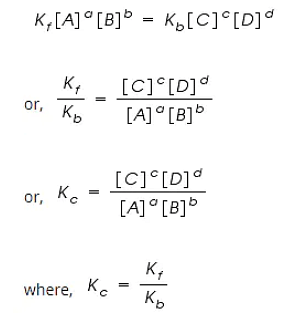Find the products formed if chlorine reacts with the cold and dilute sodium hydroxide solution.
Find the products formed if chlorine reacts with the cold and dilute sodium hydroxide solution.
Solution and Explanation
When chlorine reacts with cold and dilute sodium hydroxide (\(NaOH\)) solution, the following products are formed:
Sodium Hypochlorite (NaOCl): Chlorine (\(Cl_2\)) reacts with sodium hydroxide (\(NaOH\)) to produce sodium hypochlorite (\(NaOCl\)) as one of the primary products. The balanced chemical equation for this reaction is:
\(Cl_2 + 2NaOH → NaOCl + NaCl + H_2O \)
Sodium Chloride (NaCl): In addition to sodium hypochlorite, sodium chloride (\(NaCl\)) is also formed as a product. The balanced chemical equation shows the formation of sodium chloride:
\(Cl_2 + 2NaOH → NaOCl + NaCl + H_2O \)
Water (H2O): Water is produced as a byproduct of the reaction. The balanced chemical equation includes water as one of the products:
\(Cl_2 + 2NaOH → NaOCl + NaCl + H_2O\)
So, when chlorine reacts with a cold and dilute sodium hydroxide solution, the products formed are sodium hypochlorite (\(NaOCl\)), sodium chloride (\(NaCl\)), and water (\(H_2O\)).
Top Questions on Chemical Reactions
Consider the following reaction occurring in the blast furnace. \[ {Fe}_3{O}_4(s) + 4{CO}(g) \rightarrow 3{Fe}(l) + 4{CO}_2(g) \] ‘x’ kg of iron is produced when \(2.32 \times 10^3\) kg \(Fe_3O_4\) and \(2.8 \times 10^2 \) kg CO are brought together in the furnace.
The value of ‘x’ is __________ (nearest integer).- JEE Main - 2025
- Chemistry
- Chemical Reactions
X g of benzoic acid on reaction with aqueous \(NaHCO_3\) release \(CO_2\) that occupied 11.2 L volume at STP. X is ________ g.
- JEE Main - 2025
- Chemistry
- Chemical Reactions
- For a reaction, $$ {N}_2{O}_5(g) \rightarrow 2{NO}_2(g) + \frac{1}{2} {O}_2(g) $$ in a constant volume container, no products were present initially. The final pressure of the system when 50% of the reaction gets completed is:
- JEE Main - 2025
- Chemistry
- Chemical Reactions
- Identify A, B, and C in the given reaction sequence: \[ \text{A} \xrightarrow{\text{HNO}_3} \text{Pb(NO}_3)_2 \xrightarrow{\text{H}_2\text{SO}_4} \text{B} \rightarrow \text{C (Yellow ppt)}. \]
- JEE Main - 2025
- Chemistry
- Chemical Reactions
- Given below are two statements: Statement (I): The boiling points of alcohols and phenols increase with increase in the number of C-atoms.
Statement (II): The boiling points of alcohols and phenols are higher in comparison to other classes of compounds such as ethers and haloalkanes. In the light of the above statements, choose the correct answer from the options given below:- JEE Main - 2025
- Chemistry
- Chemical Reactions
Questions Asked in AP EAMCET exam
- \( C_1 \) is the circle with centre at \( (0,0) \) and radius 4, \( C_2 \) is a variable circle with centre at \( (\alpha, \beta) \) and radius 5. If the common chord of \( C_1 \) and \( C_2 \) has slope \( \frac{3}{4} \) and of maximum length, then one of the possible values of \( \alpha + \beta \) is:
- In a consignment of 15 articles, it is found that 3 are defective. If a sample of 5 articles is chosen at random from it, then the probability of having 2 defective articles is:
- AP EAMCET - 2024
- Probability
If the roots of $\sqrt{\frac{1 - y}{y}} + \sqrt{\frac{y}{1 - y}} = \frac{5}{2}$ are $\alpha$ and $\beta$ ($\beta > \alpha$) and the equation $(\alpha + \beta)x^4 - 25\alpha \beta x^2 + (\gamma + \beta - \alpha) = 0$ has real roots, then a possible value of $y$ is:
- AP EAMCET - 2024
- General and Particular Solutions of a Differential Equation
- A 25 kW drilling machine is drilled for 4 minutes to bore a hole in an aluminium block of mass \(20 \times 10^3\) kg. If 40\% of the work done is utilized to raise the temperature of the block and if the specific heat of aluminium is \(0.9 \, {kJ/kg}^\circ C\), then the rise in temperature of aluminium block is:
- AP EAMCET - 2024
- communication systems
- At temperature \( T \) (K), the equilibrium constant \( K_c \) for the reaction: \[ A_2(g) \rightleftharpoons B_2(g) \] is 99.0. Two moles of \( A_2(g) \) were heated in a 1L closed flask to reach equilibrium. What are the equilibrium concentrations (in \( mol \ L^{-1} \)) of \( A_2(g) \) and \( B_2(g) \)?
- AP EAMCET - 2024
- Law Of Chemical Equilibrium And Equilibrium Constant
Concepts Used:
Law of Chemical Equilibrium
Law of Chemical Equilibrium states that at a constant temperature, the rate of a chemical reaction is directly proportional to the product of the molar concentrations of the reactants each raised to a power equal to the corresponding stoichiometric coefficients as represented by the balanced chemical equation.
Let us consider a general reversible reaction;
A+B ↔ C+D
After some time, there is a reduction in reactants A and B and an accumulation of the products C and D. As a result, the rate of the forward reaction decreases and that of backward reaction increases.
Eventually, the two reactions occur at the same rate and a state of equilibrium is attained.
By applying the Law of Mass Action;
The rate of forward reaction;
Rf = Kf [A]a [B]b
The rate of backward reaction;
Rb = Kb [C]c [D]d
Where,
[A], [B], [C] and [D] are the concentrations of A, B, C and D at equilibrium respectively.
a, b, c, and d are the stoichiometric coefficients of A, B, C and D respectively.
Kf and Kb are the rate constants of forward and backward reactions.
However, at equilibrium,
Rate of forward reaction = Rate of backward reaction.

Kc is called the equilibrium constant expressed in terms of molar concentrations.
The above equation is known as the equation of Law of Chemical Equilibrium.